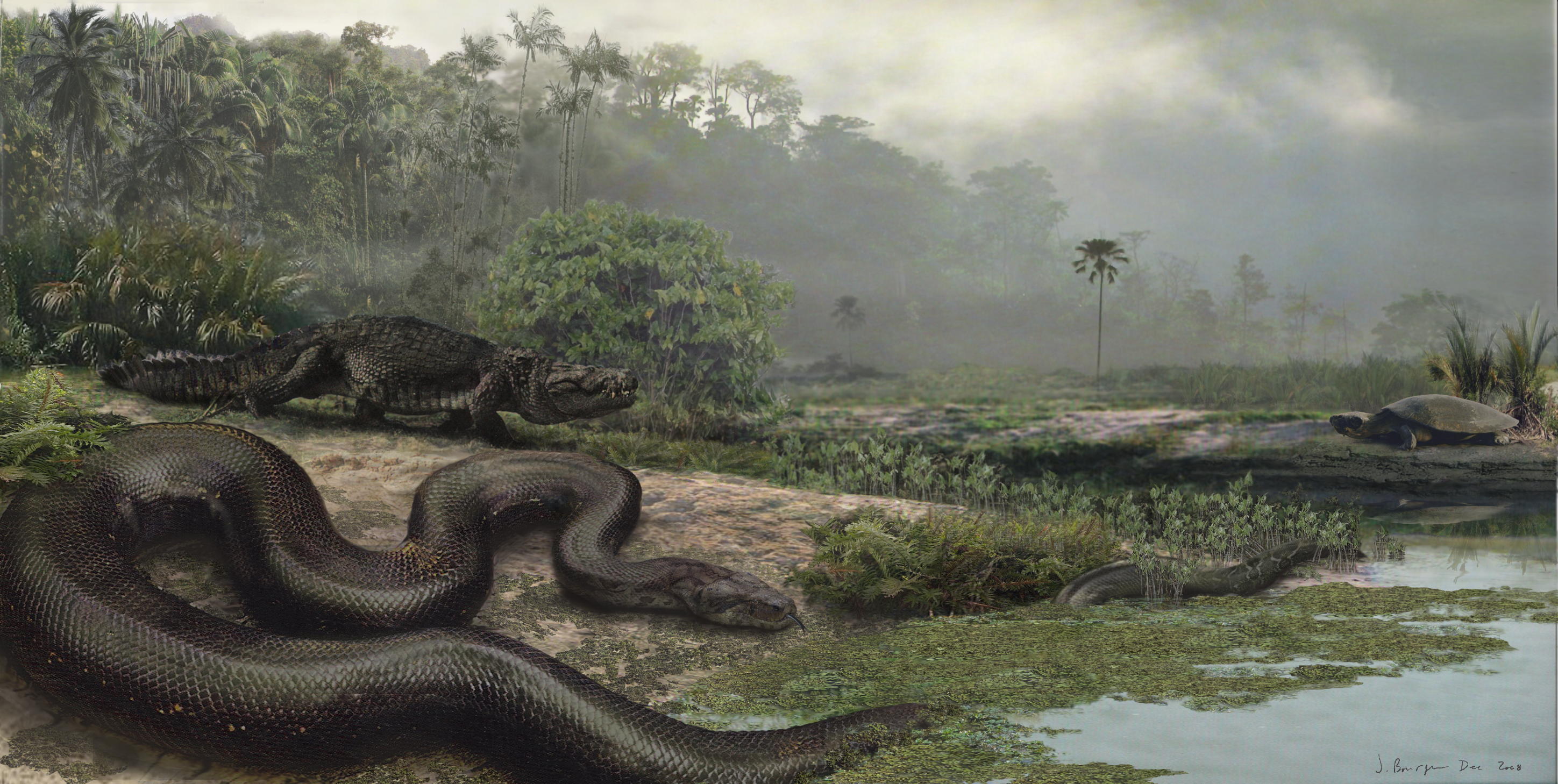Sixty million years before Jennifer Lopez starred in the film "Anaconda," the world's biggest snake slithered around northern South America. Excavations in Colombia co-organized by Carlos Jaramillo, staff scientist at the Smithsonian Tropical Research Institute in Panama and Jonathan Bloch, curator of vertebrate paleontology at the University of Florida's Florida Museum of Natural History, unearthed fossil remains of a new snake species named Titanoboa cerrejonensis.
Surrounded by huge trucks extracting coal from Cerrejon, one of the world's largest open-pit mines, researchers discovered fossilized bones of super-sized snakes and their prey, crocodiles and turtles, in the Cerrejon Formation, along with fossilized plant material from the oldest known rainforest in the Americas, which flourished at the site 58-60 million years ago.
 This artist's rendering of Titanoboa cerrejonensis demonstrates the great snake's size. It is anticipated the boa spent much of its life in or near water. Photo by: Jason Bourque, University of Florida
This artist's rendering of Titanoboa cerrejonensis demonstrates the great snake's size. It is anticipated the boa spent much of its life in or near water. Photo by: Jason Bourque, University of Florida
Jason Head, the lead author of the new species description in the journal Nature, is a research associate at the Smithsonian's National Museum of Natural History and assistant professor of ecology and evolutionary biology at the University of Toronto Mississauga. Head, with David Polly, associate professor of geosciences at Indiana University, used the ratio between vertebral size and the length of existing snakes to estimate that this boa-like snake must have reached 13 meters (42 feet) in length and weighed more than a ton. Titanoboa, as it is now called, is the largest snake ever known, and was the largest non-marine vertebrate from the epoch immediately following the extinction of dinosaurs 65 million years ago. "The discovery of Titanoboa challenges our understanding of past climates and environments, as well as the biological limitations on the evolution of giant snakes." said Head "This shows how much more information about the history of Earth there is to glean from a resource like the reptile fossil record."
Titanoboa's size indicates that it lived in an environment where the average yearly temperature was 30-34 degrees Celsius. This estimate coincides with paleoclimatic models predicting greenhouse conditions. "This temperature estimate is much hotter than modern temperatures in tropical rainforests anywhere in the world. The fossil floras that the Smithsonian has been collecting in Cerrejon for many years indicate that the area was a tropical rainforest. That means that tropical rainforests could exist at temperatures 3-4 degrees Celsius hotter than modern tropical rainforests experience," said Jaramillo.